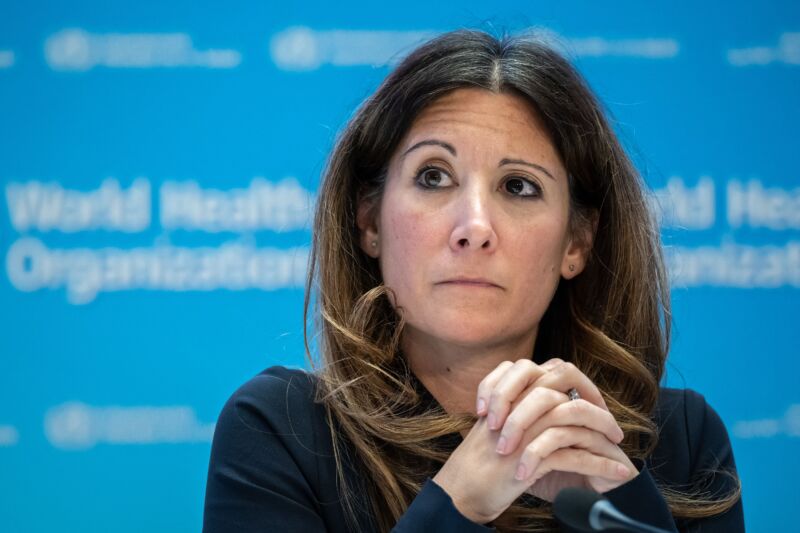
Enlarge / WHO's COVID-19 technical lead, Maria Van Kerkhove, looks on during a press conference at the World Health Organization's headquarters in Geneva, on December 14, 2022. (credit: Getty | FABRICE COFFRINI)
With global attention and anxiety locked onto the latest coronavirus omicron subvariant BA.2.86, health officials and experts are still mostly in the dark about how the highly mutated virus will play out.
At the start of the week, amid a flurry of headlines, researchers had only six genetic sequences of the virus in the public repository GISAID, even though the virus had already spread to at least four countries (Denmark, Israel, UK, and the US). As of the time of publication of this article on Friday, there are still only 10 sequences from five countries (Denmark, Israel, UK, US, and South Africa). According to the World Health Organization, the variant has also appeared in wastewater sampling from Thailand and Switzerland.
As Ars reported Monday, BA.2.86 gained attention for having a large number of mutations compared with BA.2, the omicron subvariant from which it descended. The number of mutations in BA.2.86's critical spike protein is over 30, rivaling the number seen in the original omicron subvariant, BA.1, which went on to cause a tidal wave of cases and hospitalizations. BA.2.86's spike mutations appear geared toward evading neutralizing antibody protections built up from past infections and vaccinations. But with such scant and spotty detection, it's impossible to say whether this variant can outspread its many omicron-subvariant cousins to cause a wave of infection. It's also still not possible to determine if it can cause more severe disease than other variants. So far, severe disease symptoms have not been reported from the 10 cases—but that is not enough data to draw any conclusions. As the Centers for Disease Control and Prevention reported in a risk assessment Wednesday, it's "too soon to know" the impact of BA.2.86 on transmission and disease severity.
Read 10 remaining paragraphs | Comments
Ars Technica - All contentContinue reading/original-link]




